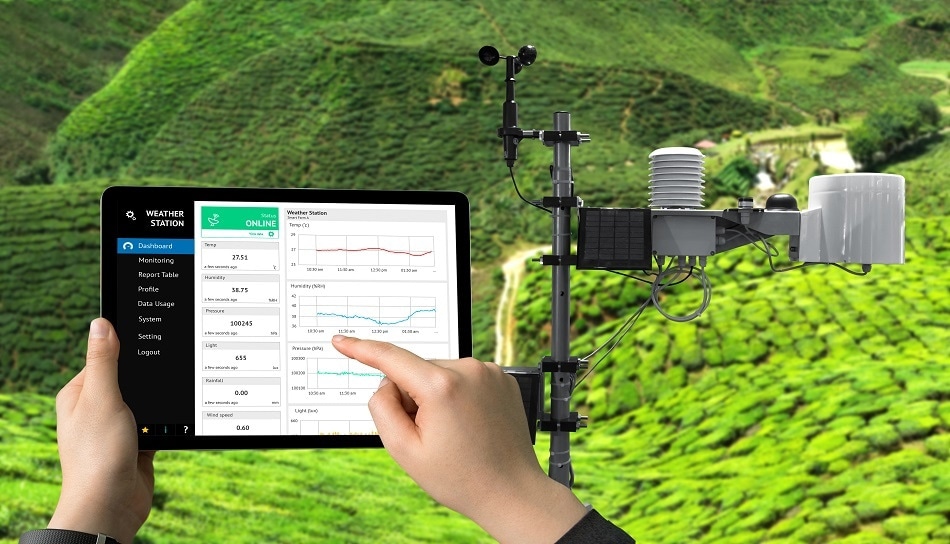Environmental monitoring sensors help to protect the public and the environment from toxic contaminants and pathogens. In this article, the different types of environmental sensors and their applications are discussed.

Image credits Shutterstock/Zapp2Photo
Why Are Environmental Monitoring Sensors Used?
Environmental monitoring helps to protect the public and the environment from toxic contaminants and pathogens. It is used to prepare environmental impact assessments, as well as establish the circumstances in which human activities carry a risk of harmful effects on the natural environment.
Environmental monitoring sensors can measure air quality, water purity and soil composition. All monitoring sensor systems and strategies have reasons and justifications in a data center that help them to establish the current status of an environment or to establish trends in environmental parameters.
What Contaminants Are Detected By Environmental Sensors?
Toxic contaminants and pathogens can be released into the air, soil, and water.
Air pollutants originate from sources such as vehicle emissions, refineries, power plants and industrial and laboratory processes. Pollutants include sulfur dioxide, nitrogen dioxide, carbon monoxide and volatile organic compounds.
Soil and water contaminants can be split into microbiological, radioactive, inorganic, synthetic organic and volatile organic compounds. Pesticides and herbicides are applied directly to plants and soils, and spills, leaking pipes, underground storage tanks, waste dumps, and waste repositories can cause incidental releases of other contaminants.
Heavy metals and organic contaminants are increasing in parts of the environment as a result of anthropogenic activity. Metal contaminants concentrate in aquatic matrices such as suspended matter, sediment and biota, which results in an increased presence in the aquatic food chain.
Some contaminants persist for years and can migrate through large regions of soil, until they eventually reach water resources and present ecological and human-health threats.
How Do Environmental Sensors Monitor Conditions?
The three main types conditions environmental sensors monitor are air, soil and water.
Air pollution is a constantly growing problem worldwide. Air quality monitoring is done via air sampling, taking data on parameters like gas concentrations, ambient temperature and humidity.
The sampling can be passive, diffusive or done by biomonitoring with organisms that bioaccumulate air pollutants. As air pollution concentration is heavily influenced by the wind, environmental sensors partner with anemometer data, as well as topography information as landscape features can hinder the process of lateral atmospheric mixing.
Soil monitoring is carried out through soil sampling, which includes looking at soil erosion, salinity and contamination. Farming is key to the world’s food production while the regeneration of forests and jungles is central to keeping the air clean and free of CO2, so a large number of environmental sensor projects focus on soil quality.
Water monitoring has a wide range of sampling methods depending on the environment and the type of material being analyzed. The types of water sampling include judgmental, simple random, stratified, grid, systematic, adaptive cluster, biomonitoring, remote sensors, passive, semi and continuous and grab sampling. The chemical condition of the water is of high importance, so the presence of oxygen, nutrients, oils, pesticides and metals are also monitored by environmental sensors.
Types of Environmental Monitoring Sensors
There are numerous types of environmental sensors depending on the specifications needed for monitoring. Sensitivity, size and speed are all factors to consider when choosing an environmental sensor.
Monitoring sensors can be divided into categories depending on the type of sensors being used, such as a humidity sensor, and the environmental factors that an analyst is looking at.
The main types of sensors include:
- Trace metal sensors - Laser-induced breakdown spectroscopy (LIBS), nanoelectrode array and miniature chemical flow-probe sensor
- Radioisotopic sensors - RadFET (Radiation field-effect transistor), cadmium zinc telluride (CZT) detectors, low-energy pin diodes beta spectrometer, thermoluminescent dosimeter (TLD), isotope identification gamma detector, neutron generator for nuclear material detection, non-sandia radiation detectors
- Volatile organic compound sensors - Evanescent fiber-optic chemical sensor, grating light reflection spectroscopy (GLRS), miniature chemical flow probe sensor, chemical sensor arrays, MicroChemLab (gas phase), gold nanoparticle chemiresistors, electrical impedance of tethered lipid bilayers on planar electrodes, MicroHound, hyperspectral imaging, chemiresistor array
- Biological sensors - Fatty acid methyl esters (FAME) analyzer, insulator-based dielectrophoresis, biological sensor arrays, μProLab, MicroChemLab (Liquid)
Environmental sensors can also be split into types depending on environmental factors. These types of monitoring sensors include:
- Moisture sensors – Moisture sensors are essential for the measurement of volumetric water content in the soil towards the chimerical environment by several orders of magnitude.
- Pressure sensors/transducers – Pressure sensors operate on the basis of pressure applied. They are used in fields such as aviation, manufacturing biomedical measurements, automobile and hydraulic measurements.
- Tilt sensors – The tilt sensor relates the two different axes indicating a reference plane that may be in two different axes. This plays an important role in measuring tilt angles with reference to the Earth’s ground plane. Tilt sensors are common in the industry and in game controllers.
- Rain sensors – Rain sensors are a type of switching device which gets activated in the presence of rainfall. Rain sensors are used in areas such as as water conservation devices in irrigation systems, and in automobiles with windscreen wipers.
- Vibration sensors – Vibration sensors are important for displacement and acceleration with respect to the enduring impact on the environment. Displacement, linear velocity and acceleration are different factors by which vibration sensors are measured.
Disclaimer: The views expressed here are those of the author expressed in their private capacity and do not necessarily represent the views of AZoM.com Limited T/A AZoNetwork the owner and operator of this website. This disclaimer forms part of the Terms and conditions of use of this website.